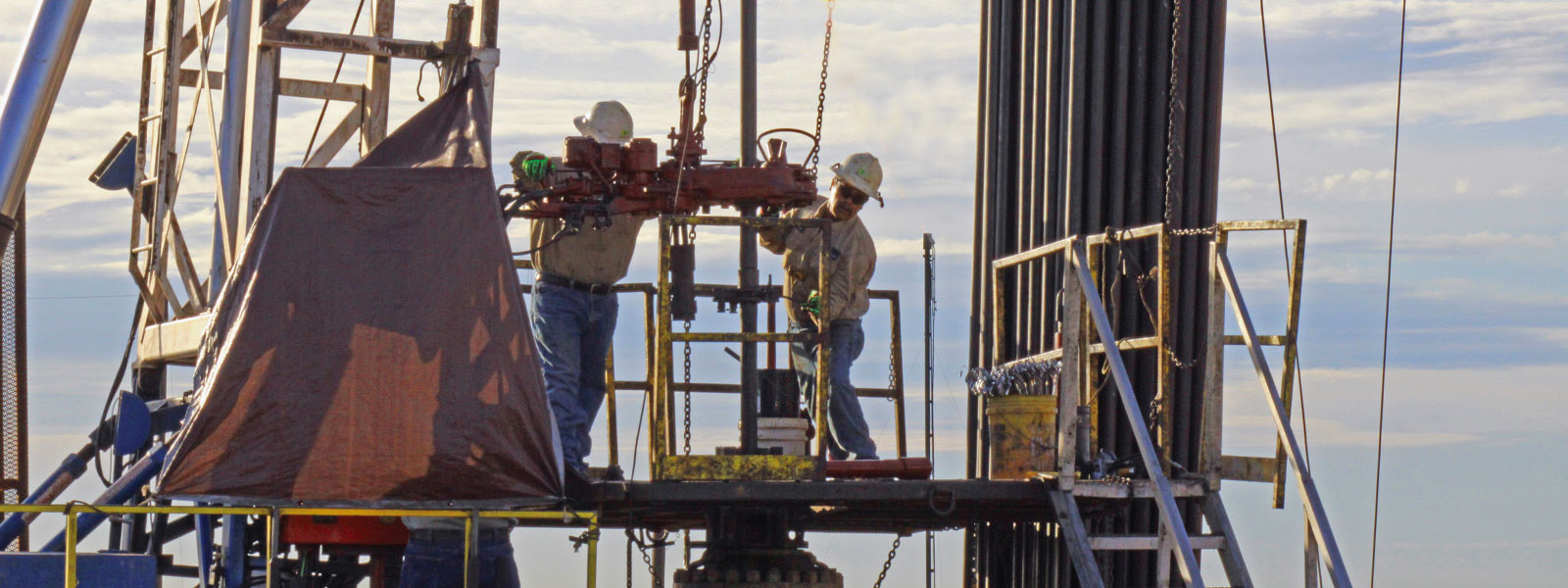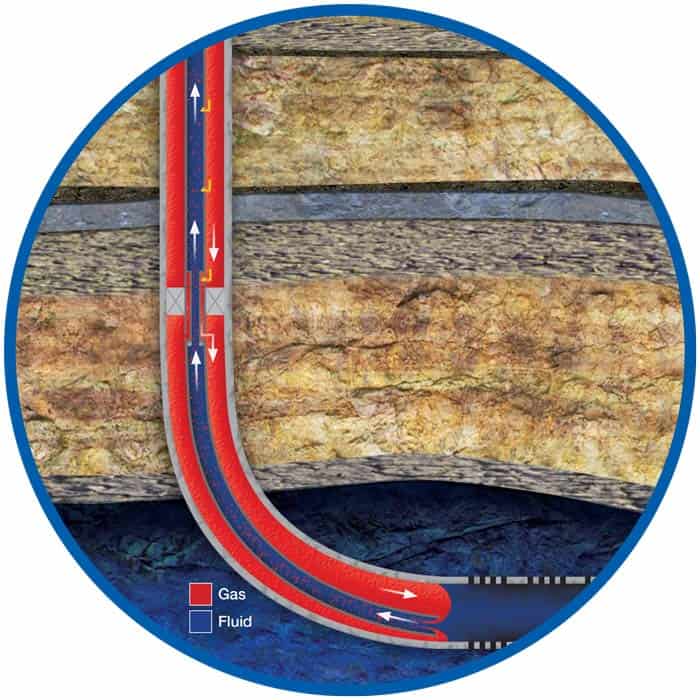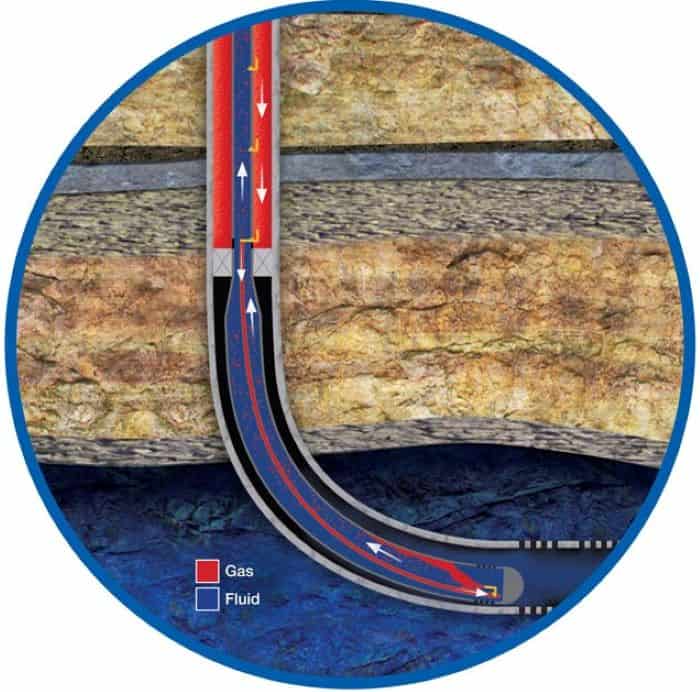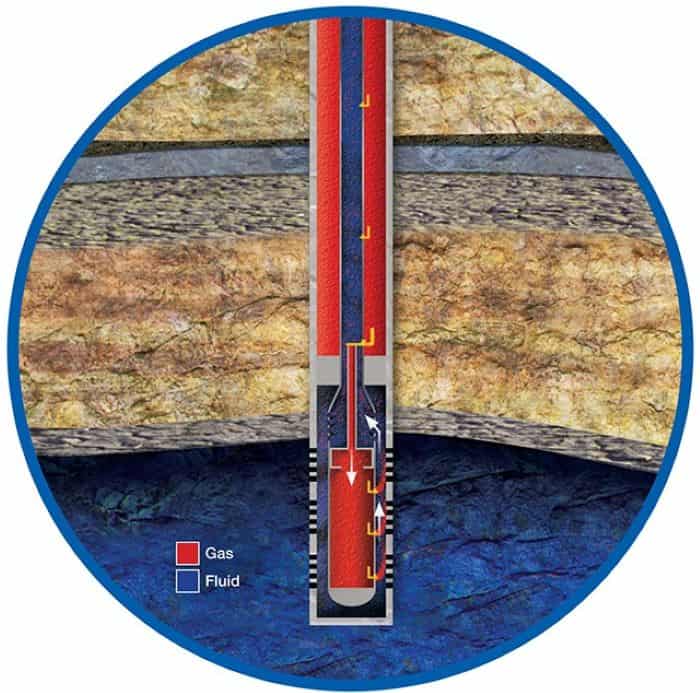
Packer Bypass System (PBS)
The Packer Bypass System (PBS) is a combination of the conventional gas lift system with a packer, and the open-ended, packerless system. With tubing and gas lift valves above the packer and a bypass assembly, injected gas can travel through the packer. This allows the gas lift system to reach the end of the tubing tail below the packer, in the curve of the wellbore. This is the ideal point of lift for the lowest flowing bottom-hole pressure and lowest flowing gradient. With injection gas above and below the packer through the unloading of the well, it is easy to treat the tubing and casing string with chemicals, if needed. When the well is shut-in, the packer prevents fluid from re-entering the annulus above the packer, and exposing the upper gas lift valves to fluid and wellbore “trash.” Upon resuming gas injection and unloading the well again, this prevents issues such as a hung open gas lift valve or erosion of gas lift equipment, when kicking the well back off.
A system with no packer until you need one.
Micro-Annulus Crossover System
A horizontal micro-annulus system utilizes a crossover flow adapter and a distinct mini wellbore below the packer. This method allows for a deeper point of gas injection, as compared to a conventional gas lift system, usually in a toe-up horizontal lateral. It also does not cause extra back pressure on the formation. This method is better than a conventional gas lift at lowering flowing bottom-hole pressure. An example application might include 2-3/8” tubing above the packer with a crossover flow adapter and 2-7/8” tail pipe below the packer with a 1” or 1-1/4” internal injection string inside the tail pipe. Gas is contained in the small string and lift is annular in the controlled micro-annular area for optimum gas utilization and density reduction.
A vertical micro-annulus system is a good option for wells with low reservoir pressure where it is imperative to isolate gas lift pressure from the perforations. This method provides the ability to manage large casing wellbores with lower amounts of injection gas volumes and pressures. Injection pressure is kept strictly in the injection string and isolated from the perforated interval. The compressed gas moves down the casing annulus and travels through the crossover flow adapter into the 1” or 1-1/4” internal injection string. When the gas travels through the gas lift valve, it exits into the produced fluid, reducing the density and delivering the production to the surface.
Allows for a deeper point of gas injection.
Increased Annular Velocity System (IAV)
The horizontal IAV system provides tubing and gas lift valves that are above a packer, along with a properly sized injection string with internally mounted gas lift valves below the packer. It is imperative to use the proper size tubing and injection string to keep unloading velocities above critical rate and successfully keep liquid off the reservoir. To guarantee the preservation of adequate flow velocity throughout the entire length of the well, acceptable compression must be accessible at the surface for the proper amount of injection gas.
The vertical IAV system creates the ability to reduce the cross-sectional area of flow from larger casing wellbores, along with reduced density of the hydrostatic fluid on the perforations and the formation. The compressed gas moves down the tubing/casing annulus above the packer, through the crossover adapter assembled to the packer and into a dead string of tubing that also serves as an area for compressed gas to travel down and stay separate from the flow area. The gas then leaves the gas lift valves that are placed at various points in the dead string tail pipe and combines with produced fluid and gas in the annulus. Injection gas pressure is isolated from the perforated interval and kept in the injection string. Fluid and gas flow up through the crossover flow adapter, back into tubing flow above the packer and then to the surface through the production tubing. This application is a great choice if low reservoir pressure is present and it is imperative to isolate the gas lift pressure from long perforated intervals. Beneath packer gas lift requires no alterations to the wellhead and installation is simple.
The vertical IAV system creates the ability to reduce the cross-sectional area of flow from larger casing wellbores, along with reduced density of the hydrostatic fluid on the perforations and the formation.



